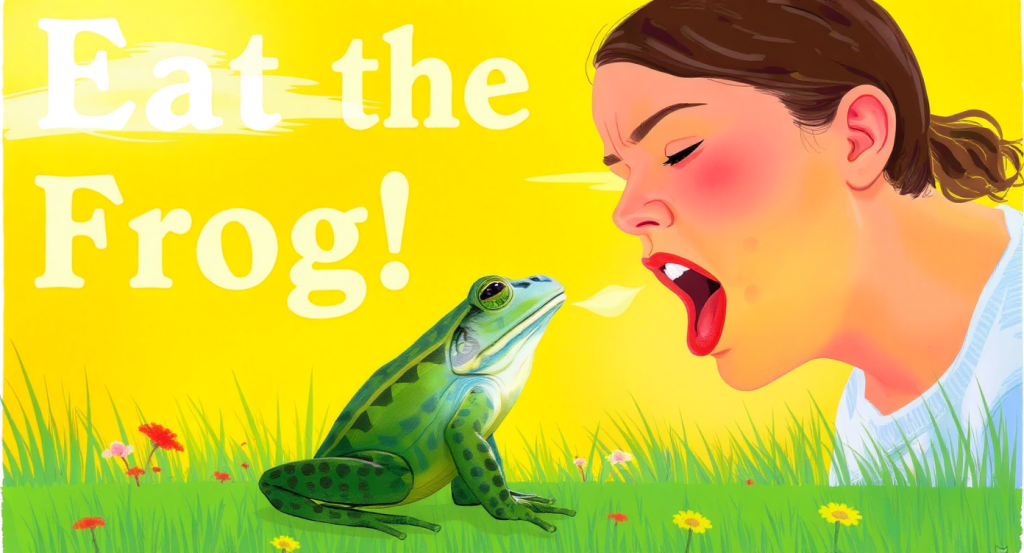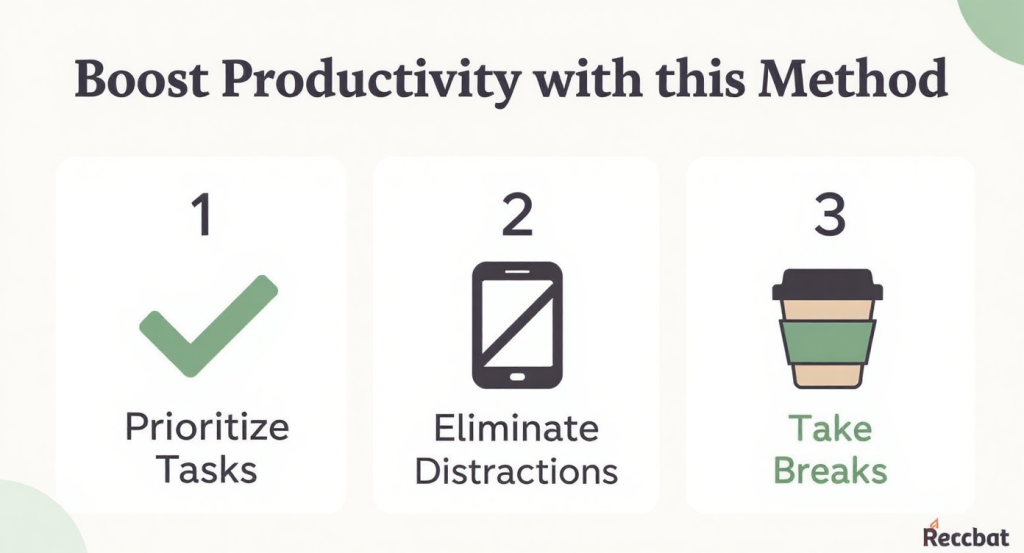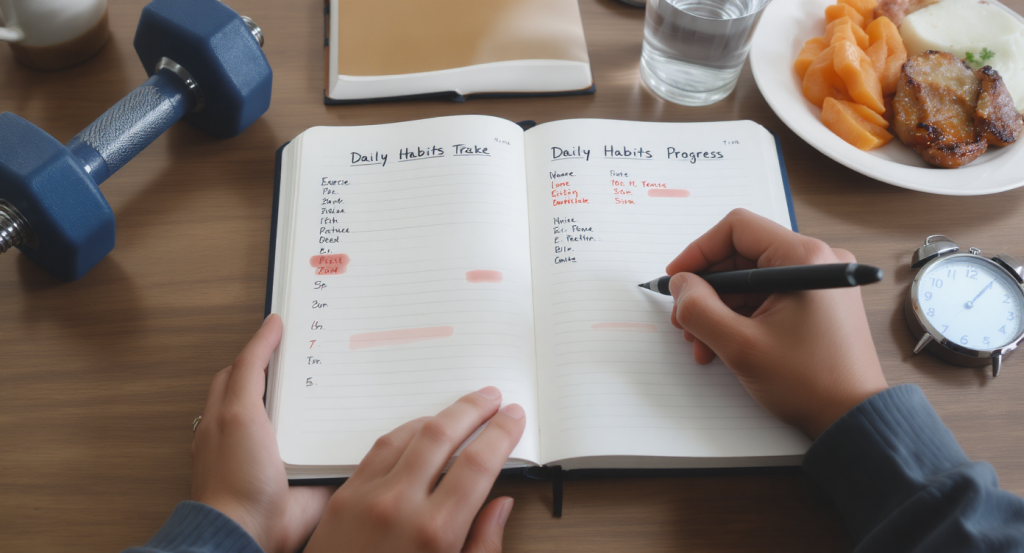Do you ever sit down at your computer with a long to-do list, only to get to the end of your day feeling like you’ve accomplished barely anything of consequence? You’re not alone. In the modern era, we live in a sustained cacophony of distractions, never-ending notifications, and pressure to multitask. But what if there were an easy mental tweak that you could make that would change everything about how you experience your day? Then there’s the “Eat the Frog” approach – a simple but effective method that can help you concentrate, prioritise, and get s**t done.
What Does “Eat the Frog” Actually Mean?
The phrase is weird on its face. Who, in their right mind, would want to eat a frog?
A quote often misattributed to Mark Twain:
If you have to eat a frog, it doesn’t pay to sit and look at it for long. And if it’s your job to eat two frogs, it’s best to eat the biggest one first.”
In productivity terms, your “frog” is the most important, most difficult, or least appealing task of your day, the one you are most likely to put off. That “frog,” if you’re wondering, is the phone call you don’t want to make but know you need to, the excruciating email you never feel like writing, or the project on your to-do list that nothing else will get done before. The concept is simple: do that first. Not second, not after your coffee, and not after you check emails. First.
Why? Because when it’s done, everything else in your day is easier, less stressful, and more productive.
The Psychology Behind Eating the Frog

Let’s be real: Procrastination is an easy hole to fall into. We frequently avoid activities not because they are hard, but because they are unpleasant, fear, confusion, tedium, or anxiety. The trouble is, the longer we put these tasks off, the more space they occupy in our minds. That pain doesn’t disappear; it swells. It nags at the back of your mind all day, drains your energy, and even makes it hard to concentrate on simple tasks.
The “Eat the Frog” technique works because it flips the script. It acknowledges that there will be discomfort either way, but working out in the morning helps alleviate it early in the day. Subject 2. It acknowledges that there is pain either way. You steer your day, rather than letting your to-dos dictate it.
It’s also in line with the way human willpower works. Research has found that willpower is strongest in the morning and decreases throughout the remainder of the day. And before that time, the parents had already been running on fumes for a while. So if you’re doing your most important work, then you’re working in sync with your natural energy rhythms, rather than against them.
Identifying Your Frog
Before you can eat the frog, you have to know what it is. Each day, you’ll have several tasks, some simple, some pressing, some time-consuming. But the frog is seldom urgent. It’s an important but uncomfortable task, the one that will do the most to help you reach your long-term goals, but it feels daunting to a great extent.
Ask yourself:
- What is the one thing I don’t want to do today?
- What accomplishment would I be most proud of if it happened?
- What is the most important task for me today/this week/towards my goals?
That’s your frog.
If you have more than one potential frog, take the largest and ugliest one that is still viable. If you’re still unsure, try to find the task that you mentally resist the most. And resistance is often a sign that something matters.
Why This Method Boosts Productivity

Eating the frog creates momentum. Once you remove the most difficult task, every other task feels easier. You’ve gotten over the steepest hill; now it’s coasting. There’s nothing like that momentum to inspire confidence and a sense of achievement early in the morning, which then sustains you the entire day.
You’ll also reduce stress. By addressing your most challenging task early, you eliminate the sense of dread that often accompanies procrastination. Rather than stewing about the task all day, you’ll be free to concentrate on everything else with a clearer head.
Another major benefit is focus. When you get that one important thing done first, you aren’t caught in the trap of the busy but unproductive cycle. Answering emails, attending meetings, and doing admin certainly keep you busy, but they don’t ‘move the needle’ like achieving your most important task of that day does.
How to Eat that Frog: Practical Steps
Start with preparation. On the night before, pick your frog for the next day. Write it down. It allows your brain to prepare for waking up and enables you to wake up with a greater sense of direction.
When you first wake up in the morning, don’t immediately plunge into email or social media. These are easy to fall prey to. Instead, allocate your most productive time block to your frog, whether it’s 30 minutes or two hours. Maintain a quiet working atmosphere, free from distractions. Silence your phone. Close unnecessary tabs. Only do that one thing.
If your frog is especially big or scary, take it one step at a time. Instead of saying “Finish project proposal,” say: “Outline main points for proposal,” Or “Write introduction section.” Minor victories add up to major ones.
Don’t aim for perfection. The idea is to make some progress. Others, days or even weeks. All that matters most is that you continue to make gradual progress.
What If You Miss a Day?
It’s easy to fall off the wagon, if it happens. You may oversleep, find yourself in an endless meeting or have a generally bad day. That’s okay. You’re not aiming at perfection here; you’re going for consistency. If you miss a day, think about what interrupted your schedule and try again tomorrow. The more you do it, the more second nature it becomes.
Over time, “eating the frog” becomes part of who you are. You are a person who takes on challenges rather than avoids them, who does things rather than procrastinates.
The Compound Effect of Daily Discipline

Eating one frog might not be such a big deal after all, but how about eating a frog every day? That’s how you make real progress. Just imagine confronting your most meaningful task every morning for a week, a month, a year. That’s hundreds of crucial things done that we could have put off, or that perhaps we shouldn’t have done. Those are the kind of disciplines that turn careers. It grows businesses. It builds confidence.
The trick is not to let yourself off the hook. Don’t exchange the frog for a tadpole, a smaller, inferior task that will trick you into feeling productive. It’s appealing, but nowhere near as fulfilling.
How It Applies Beyond Work
And this isn’t just for professional jobs. It pertains to health, personal growth, and relationships. That workout you’ve been skipping? That’s a frog. That candid discussion you’ve been putting off? Another frog. And so, when you get in the habit of confronting what matters, even when it is challenging, every area of your life will improve.
Consider “Eat the Frog” as a mindset, a way of facing life with courage, clarity, and resolution.
Conclusion: Start Tomorrow with a Fork in Hand
Productivity is not about doing more; it’s about doing what matters most. “Eat the Frog” is a potent, easy way to make sure your days are purposeful and your actions are deliberate while making real progress.
So tonight, as you’re getting ready for bed, reflect on: What’s my frog tomorrow? Write it down. Pledge to deal with it first thing in the morning.
And when you wake, waste no time eating that frog. Before you’re even halfway through the day, you’ll thank yourself.
